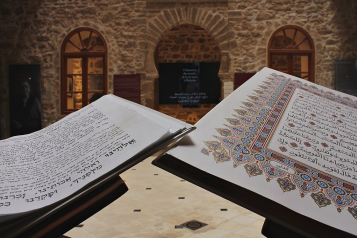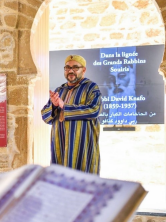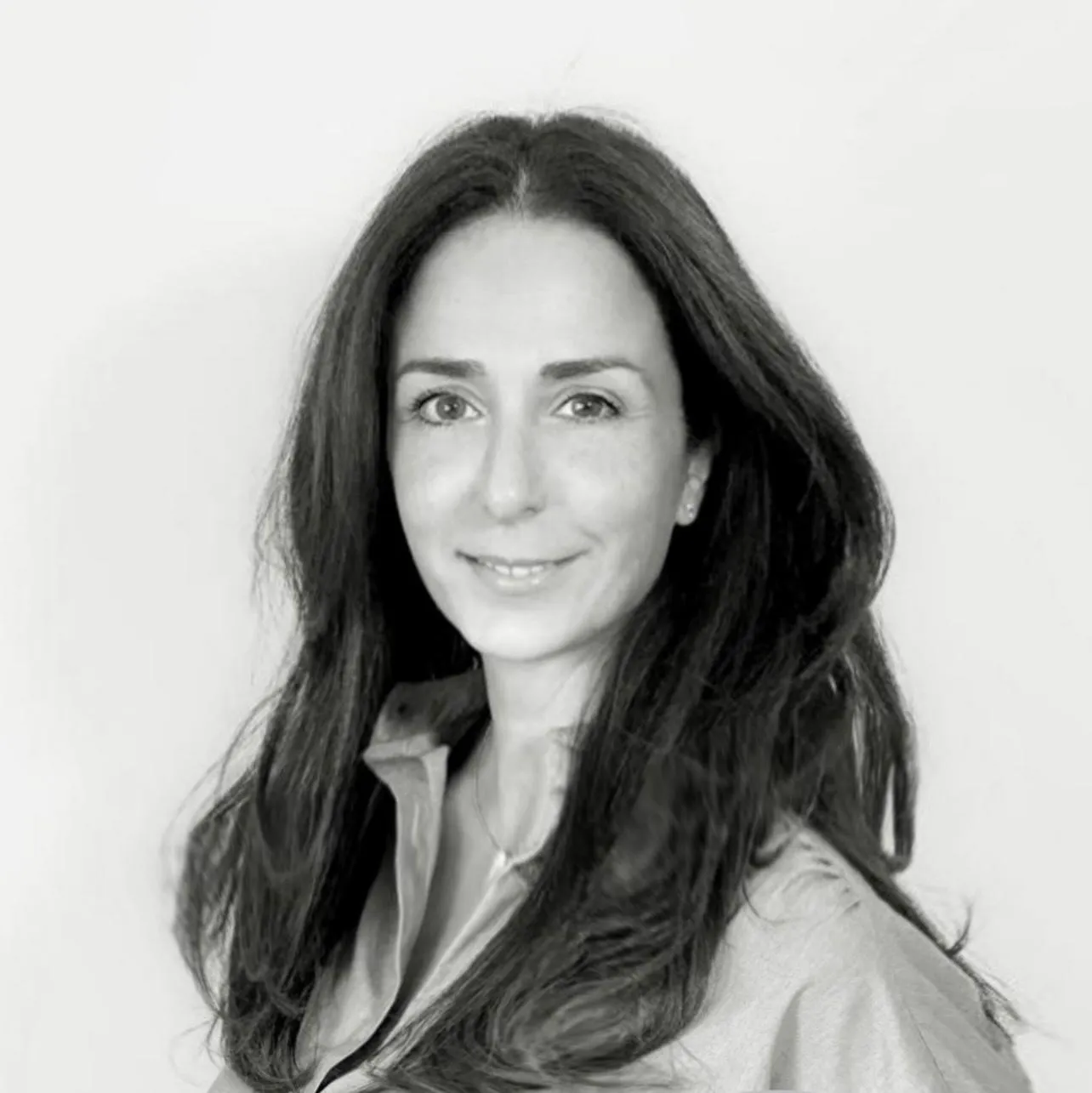
Preserving Jewish heritage in Morocco
With its unique model, Morocco makes religion a factor of peace, ensuring that the Jewish and Christian communities live in harmony and respect for the values of living together. The central pillar of this approach is the institution of the Commandery of the Faithful, “Imarat Al-Mouminine”, embodied by His Majesty King Mohammed VI, who is the guarantor of national unity.
Coexistence and living together are not empty words in Morocco. For centuries and right up to the present day, Jews have lived in harmony and peace alongside their Muslim brethren. What's more, the Kings of Morocco have always ensured that the Jewish component of the Moroccan nation can worship in the best possible conditions and preserve its socio-cultural specificities.
The Moroccan Jewish exception
Present since antiquity, the Moroccan Jewish community has grown over the centuries, notably with the arrival of those expelled from Spain by the Catholic kings in 1492. In the 1940s, it represented some 250,000 people, or 10% of the population, and was the largest Jewish community in the Arab world. Many left after the founding of the State of Israel in 1948, then after the 6-Day War in 1967, with the aim of repopulating the country and also responding to the messianic religious call. Today, the Moroccan Jewish community, based mainly in Casablanca, numbers around 2,500 and remains the largest in North Africa.
The status of Moroccan Jews in the 20th century has oscillated between different poles — from that of "dhimmi" before the protectorate in 1912, to that of "privileged colonized" under French rule, to that of full-fledged subject of the Cherifian kingdom. In 1941, King Mohammed V officially declared his disapproval of the Vichy regime's anti-Jewish laws, and strictly refused to make any distinction between his Jewish and Muslim subjects.
This singularity of the Moroccan example, which is the country's strength, is not about to change. "Relations between Israel and Morocco are special”, says Moroccan Foreign Minister Nasser Bourita. The diplomat points to the history that binds the Cherifian kingdom to the Jewish community — "It's a special history in the Arab world. King Mohammed VI and previous kings, including Hassan II, respect and protect Jews”. The kingdom now wants to teach this history to its children. Indeed, King Mohammed VI had already clearly demonstrated his desire to take care of all the Kingdom's roots and the tributaries of its plural identity in order to build its future, by having the enhancement of Moroccan Jewish heritage included in the new Constitution of July 2011.
Also, a year after the signing of the Abraham Accords in December 2020, which marked the starting point for the normalization of diplomatic relations between Morocco and Israel, several initiatives were taken in response to the growing interest in preserving Morocco's Jewish heritage. The Sovereign decided to include the Jewish component of national history in the school curriculum for young Moroccans, and then ordered the renovation of hundreds of synagogues, grave yards and Jewish heritage sites in several Moroccan cities, including the Jewish cemetery in the city of Fez, which comprises 13,000 graves. His Majesty also wishes to restore the original names of some of the country's Jewish neighborhoods.
Bayt Dakira —Jewish-Moroccan memory in the land of Islam

The only one of its kind in the southern Mediterranean and in the Land of Islam, Bayt Dakira (the House of Memory) bears witness to Essaouira's Judeo-Muslim past, the exceptional destiny of the city's Jews and their relations with the Muslim populations, which have always been rich and benevolent.
Located in the "Mellah" Jewish quarter of the old medina, the museum is a spiritual space dedicated to the city's Jewish community.
It houses the International Center for Research on the History of Relations between Judaism and Islam, and plays an important role in preserving and promoting Moroccan Jewish memory. With the "Slat Attia" synagogue as its center of gravity, Bayt Dakira is a place of memory that tells the exceptional saga of the city's Judaism and its heritage through objects, texts, photos and film — from tea ceremonies to Hebrew poetry, from gold and silver filigree to embroidery and the creation of sumptuous caftans, from cultural arts to literature, from Souiris (Essaouira) rituals to the synagogue and the great trading posts that made Essaouira (formerly Mogador) so famous in the 18th and 19th centuries. This place, which presents and explains all the stages of Jewish life, from birth to death and from Bar Mitzvah to marriage, is also a place of education, a space for exchange between researchers from different backgrounds, a place for sharing, transmission and resistance to amnesia.
The Sovereign's visit to this building in 2020 reflects the special interest His Majesty the King takes in the cultural and religious heritage of the Moroccan Jewish community, and his ongoing commitment to preserving the richness and diversity of the Kingdom's spiritual components and authentic heritage.

Slat Al Fassiyine, a witness to Jewish cultural heritage
Another equally symbolic project is the restoration of the Slat Al Fassiyine synagogue. A veritable sanctuary of Judaism in the city of Fes, this synagogue has been restored and transformed into a place of Jewish remembrance. For many observers, the reopening of this place of worship is an eloquent expression of the Kingdom's firm commitment to showcasing Moroccan-Jewish heritage and promoting the culture of tolerance and coexistence that has always prevailed between Moroccan Muslims and Jews.
His Majesty King Mohammed VI addressed a strong message to the participants at the inauguration, in which he stressed the importance of the cultural and spiritual heritage of the Moroccan Jewish community, as an integral part of Moroccan heritage and a testimony to the richness and diversity of its components.
Recognized and classified as a historic monument of universal interest by UNESCO and the Ministry of Culture, the restoration of the Slat Al Fassiyine synagogue is the fruit of concerted action by the Fez Jewish community, the Fondation du patrimoine culturel judéo-marocain and financial support from the German government. The restoration of this building is of the utmost importance, since it was carried out with respect for the particular nature of synagogues in Morocco, each with its own specific features, linked either to the families who built them, or to the districts where they are located. Its architectural rehabilitation, the work of Moroccan architects, restorers and expert "maalmin" craftsmen, has given this monument a new lease of life.
The restoration of this Jewish sanctuary is part of a program to rehabilitate the four synagogues in the Mellah of Fez, classified as historic monuments by Unesco and the Ministry of Culture. In addition to the Slat Al Fassiyine synagogue, these include the Ibn Danan, Mansano and Imhabanin synagogues.
Dating back to the 17th century, the Ibn Danan synagogue is today a place of worship named after a former rabbi and a symbol of the city's Jewish-Moroccan heritage. The Mansano synagogue was built in the 17th century by Andalusian Jews expelled from Spain. Finally, the Imhabanin synagogue (in Arabic, oum al-banine) was built in the 20th century by women.
Grave Yards

Another demonstration of the Sovereign's interest in preserving and promoting Moroccan Jewish heritage is the program to rehabilitate Jewish cemeteries. The program, which lasted five years, revisited the Moroccan Jewish funerary heritage.
This initiative, unique in Arab countries, has resulted in the rehabilitation of 167 cemeteries, the construction of over 40 kilometers of walls, the renovation of 169 cemetery gates, in addition to 200,000 square meters of paving and the erection of dozens of buildings and outbuildings. These achievements have been presented at the Institut du Monde Arabe (IMA) in Paris, the US Senate and the MoMA Museum in New York.
Through its historic sites, synagogues, mellahs, cultural and artistic expressions, the Jewish-Moroccan heritage bears witness to a shared, centuries-old history, and passes on to new generations a legacy of inestimable value.
Hebraic justice

An integral part of the Kingdom's judicial system, Hebrew justice is another striking manifestation of the diversity that characterizes Moroccan identity. Morocco was, and remains, the only Arab country where Moroccan Jews have access to Rabbinical Chambers, which are responsible for ruling on their disputes, particularly in matters of personal status and inheritance.
It is in this context that the Ministry of Justice has drawn up an action plan aimed at highlighting Hebraic justice and the roles it plays. Framed by a set of Cherifian Dahirs that illustrate its very close links with the institution of Imarat Al Mouminine, Hebraic justice in the Kingdom has been able to produce a rich body of case law inherent in the personal status of Moroccan Jewish citizens.
With a view to preserving, enhancing and protecting this historic heritage, a national campaign was launched in March 2021 to collect Hebrew judgments and manuscripts from the various conservation and archiving centers run by the Ministry of Justice. These invaluable documents will then be electronically archived and stored in secure conditions, guaranteeing better protection against deterioration. Also with the aim of preserving and promoting this part of Moroccan identity, a National Museum of the Memory of the Kingdom's Justice System will be created. Hebraic justice will be given pride of place.
After several decades of Arabization, this growing interest in Jewish culture has coincided with the reformulation of the national narrative towards a claim to Morocco's ethnic and linguistic plurality. With the 2011 Constitution, Hebraic identity became, in this movement, a fully-fledged component of Moroccan identity, on a par with Berber or Hassan identities.

